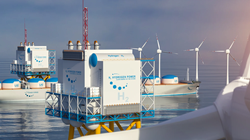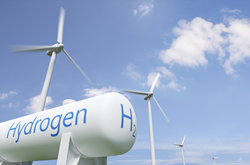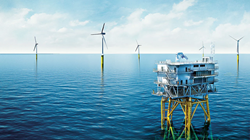Our hydrogen expert, Hasib Rahmani looks at the challenges of transporting the gas, and exploring the various options available.
Introduction
In transporting Hydrogen, as with any material, the physical state (solid, liquid or gas) needs to be identified. This can either be to tailor the transport conditions to maintain that physical state or to change the state to one that is more desirable (e.g. LNG’s)
Compressed hydrogen
Compressed hydrogen is normally pressurised to >100 bar where it will be in the dense phase, occupying less volume. This form of transport is the most mature in terms of TRL as it is the same as transported natural gas; albeit with a need to change the compressor and materials used (valves, metering stations etc…) set up to match what is needed for hydrogen. Moreover, there will need to be an upgrade to the electrical grid around the facility to be able to match the more power-hungry compressor trains for hydrogen transport.
Liquid hydrogen
Liquid hydrogen will involve the same transportation methods as Liquid Natural Gas (LNG). However, the actual material, temperatures, pressures which need to be used still require investigation to allow for the most efficient process. This allows for the transport of the most energy dense form of hydrogen. This method of transport may look very desirable from energy density viewpoint but it requires a lot of energy to convert hydrogen gas to liquid form and then maintain it as very low temperatures are needed (<-253°C).
Ammonia
Ammonia production has been around for a very long time, with the Haber-Bosch process first being used in 1913. Through the last 100 years the ammonia production and transport process has been developed making it mature in comparison to some other forms of hydrogen transport, leaving the only requiring additional development as the conversion of ammonia back into hydrogen and increasing the transport capacity of ammonia to meet a larger demand.
Liquid Organic Hydrogen Carrier (LOHC)
LOHC is the most novel technology for hydrogen transport, however, it is the most stable as it can be transported at room temperature and pressure, is not toxic like ammonia or explosive like hydrogen gas.
The various carriers used for LOHC have different molecular structures which means they will be able to carry different quantities of hydrogen. These carriers will have different costs associated with them and will have different preferred catalyst.
The idea of having a compound carry a second molecule would logically mean it would carry less than if the second molecule was in pure liquid form. However, liquid hydrogen has a density of ~70 kg/m³ at -255°C and toluene (an LOHC) has a density of ~870 kg/m³ at room temperature and pressure. Following this and that toluene can carry 6.2 wt% of hydrogen, it will mean that 1m³ of toluene can carry 54 kg of hydrogen (77% of liquid hydrogen density). This means that a larger mass of hydrogen is carried as a LOHC than compressed hydrogen (~38kg/m³ at 70 MPa).
The process of using LOHC’s to transport hydrogen is already in operation where Chiyoda used Methylcyclohexane (MCH) to demonstrate the feasibility of LOHC’s (Chiyoda Corporation, n.d.). After which, Chiyoda and Axens partnered to set up a hydrogen transport network using LOHC as the transport method.






